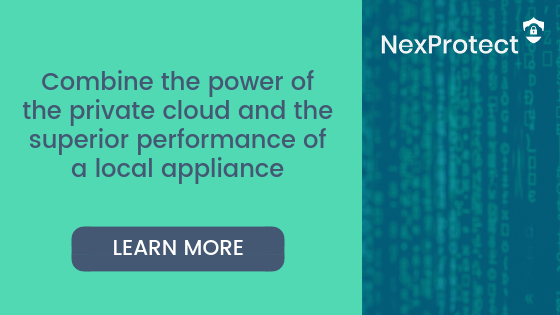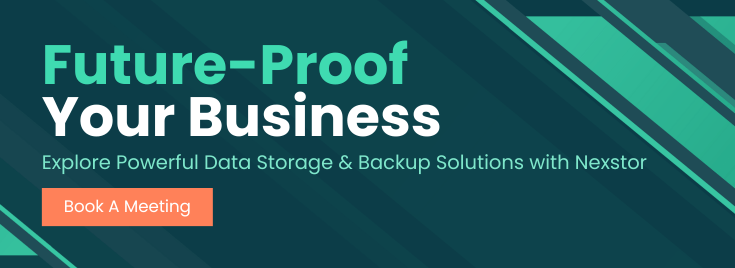In the guest blog below, originally written by Clive Longbottom from ComputerWeekly.com we learn about whether hybrid cloud is the future for operating IT platforms. This article will answer the questions one can have about moving to the hybrid cloud and will detail the steps to take and consider.
You can find Clive’s full blog below, as well as a link to the original at the bottom.
 However, effective DevOps requires effective orchestration – tooling has to be carefully chosen to ensure that the right capabilities are in place to enable the right levels of intelligence in how functions are packaged, provisioned and monitored in a contextually aware manner such that the overall platform maintains the desired performance and capabilities the organisation demands.
This then brings in a need for better technical approaches in how functions are packaged: the rise of microservices provided via containers is taking over from large, monolithic packages and virtual machines (VMs).
Systems management becomes a different beast: not only do IT staff need to monitor and maintain functions that they own within their fully managed private cloud environment, but they also must monitor in a contextually aware manner those functions that are running in a public cloud environment. Ensuring that root cause analysis is rapidly identified and that remediation can be carried out in real time, with workloads being replatformed and redirected as required is a key requirement of a hybrid cloud platform.
A key area that many have struggled with is that although they know at a technical level that cloud is a better way forward, they have found it difficult to sell the idea to the organisation is ways that the business can understand. However, a simple approach known as a Total Value Proposition provides technical people with a better means of getting their point across to the business – and so acquiring the funding required to implement such a major change in technical platform.
Hybrid cloud is the future. No matter where you are in your journey to this, there are many pitfalls to avoid, and many areas of additional possible value that are too easy to miss out on.
Originally posted by Clive Longbottom here: https://www.computerweekly.com/blog/Quocirca-Insights/The-road-to-hybrid-cloud
However, effective DevOps requires effective orchestration – tooling has to be carefully chosen to ensure that the right capabilities are in place to enable the right levels of intelligence in how functions are packaged, provisioned and monitored in a contextually aware manner such that the overall platform maintains the desired performance and capabilities the organisation demands.
This then brings in a need for better technical approaches in how functions are packaged: the rise of microservices provided via containers is taking over from large, monolithic packages and virtual machines (VMs).
Systems management becomes a different beast: not only do IT staff need to monitor and maintain functions that they own within their fully managed private cloud environment, but they also must monitor in a contextually aware manner those functions that are running in a public cloud environment. Ensuring that root cause analysis is rapidly identified and that remediation can be carried out in real time, with workloads being replatformed and redirected as required is a key requirement of a hybrid cloud platform.
A key area that many have struggled with is that although they know at a technical level that cloud is a better way forward, they have found it difficult to sell the idea to the organisation is ways that the business can understand. However, a simple approach known as a Total Value Proposition provides technical people with a better means of getting their point across to the business – and so acquiring the funding required to implement such a major change in technical platform.
Hybrid cloud is the future. No matter where you are in your journey to this, there are many pitfalls to avoid, and many areas of additional possible value that are too easy to miss out on.
Originally posted by Clive Longbottom here: https://www.computerweekly.com/blog/Quocirca-Insights/The-road-to-hybrid-cloud

The Road to Hybrid Cloud
There is little argument that cloud is having a major impact on how organisations design, provision and operate their IT platforms. However, there still seem to be major arguments as to what an overall cloud platform actually should be. For example, should the end result be 100% private cloud, 100% public cloud or something in between? Where do existing systems running on physical one-server or clustered systems fit in to this model? Should any private cloud be housed in an owned facility, in a colocation facility or operated by a third party on their equipment? Who should be the main bet when it comes to public cloud services – and how should these services be integrated together, either with other public cloud services, or with existing functions running on owned platforms? How about the cost models lying behind different approaches – which one will work best not only at an overall organisation level, but at a more granular, individual workload-based model? Once a basic platform has been decided upon, then the fun starts. How should data be secured, both from an organisation’s intellectual property point of view, and also from a legal point of view as when it comes to areas such as GDPR? How do organisations make sure that users are provided with the best means of access functions without having to remember a multitude of different usernames and passwords through the use of single sign on (SSO) systems? How can data leakage/loss prevention (DLP) and digital rights management (DRM) help to ensure that information is secure no matter where it resides – not only when the organisation has direct control of it on its own network, but also as that information passes from its control to other parts of the hybrid cloud and to partners, suppliers and customers on completely separate networks? It is also important to look at how other security approaches, such as encryption of data at rest and on the move, along with hardware, application and database security fit in with this. Once a cloud platform is in place, it can lead to a completely different approach in how functions are created, provisioned and managed. Many organisations have found that a hybrid cloud is an ideal platform to support and make the most of DevOps, with continuous development and continuous delivery being far easier than using cascade/waterfall project approaches against a less flexible physical or virtualised platform. However, effective DevOps requires effective orchestration – tooling has to be carefully chosen to ensure that the right capabilities are in place to enable the right levels of intelligence in how functions are packaged, provisioned and monitored in a contextually aware manner such that the overall platform maintains the desired performance and capabilities the organisation demands.
This then brings in a need for better technical approaches in how functions are packaged: the rise of microservices provided via containers is taking over from large, monolithic packages and virtual machines (VMs).
Systems management becomes a different beast: not only do IT staff need to monitor and maintain functions that they own within their fully managed private cloud environment, but they also must monitor in a contextually aware manner those functions that are running in a public cloud environment. Ensuring that root cause analysis is rapidly identified and that remediation can be carried out in real time, with workloads being replatformed and redirected as required is a key requirement of a hybrid cloud platform.
A key area that many have struggled with is that although they know at a technical level that cloud is a better way forward, they have found it difficult to sell the idea to the organisation is ways that the business can understand. However, a simple approach known as a Total Value Proposition provides technical people with a better means of getting their point across to the business – and so acquiring the funding required to implement such a major change in technical platform.
Hybrid cloud is the future. No matter where you are in your journey to this, there are many pitfalls to avoid, and many areas of additional possible value that are too easy to miss out on.
Originally posted by Clive Longbottom here: https://www.computerweekly.com/blog/Quocirca-Insights/The-road-to-hybrid-cloud
However, effective DevOps requires effective orchestration – tooling has to be carefully chosen to ensure that the right capabilities are in place to enable the right levels of intelligence in how functions are packaged, provisioned and monitored in a contextually aware manner such that the overall platform maintains the desired performance and capabilities the organisation demands.
This then brings in a need for better technical approaches in how functions are packaged: the rise of microservices provided via containers is taking over from large, monolithic packages and virtual machines (VMs).
Systems management becomes a different beast: not only do IT staff need to monitor and maintain functions that they own within their fully managed private cloud environment, but they also must monitor in a contextually aware manner those functions that are running in a public cloud environment. Ensuring that root cause analysis is rapidly identified and that remediation can be carried out in real time, with workloads being replatformed and redirected as required is a key requirement of a hybrid cloud platform.
A key area that many have struggled with is that although they know at a technical level that cloud is a better way forward, they have found it difficult to sell the idea to the organisation is ways that the business can understand. However, a simple approach known as a Total Value Proposition provides technical people with a better means of getting their point across to the business – and so acquiring the funding required to implement such a major change in technical platform.
Hybrid cloud is the future. No matter where you are in your journey to this, there are many pitfalls to avoid, and many areas of additional possible value that are too easy to miss out on.
Originally posted by Clive Longbottom here: https://www.computerweekly.com/blog/Quocirca-Insights/The-road-to-hybrid-cloud


